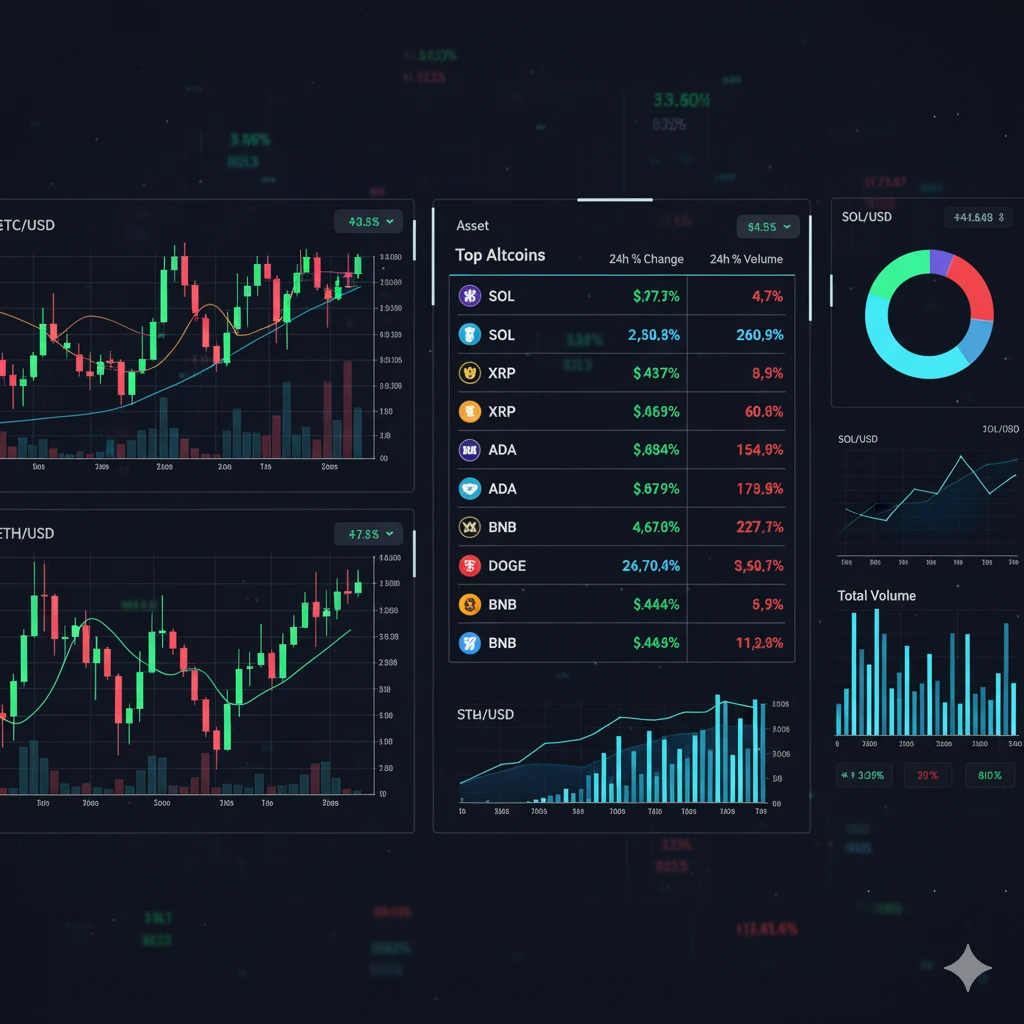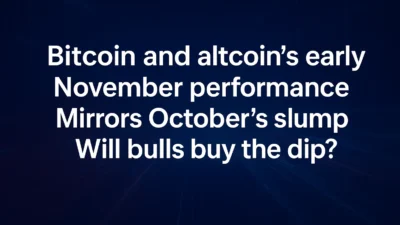Introduction
In a recent exclusive interview with Cointelegraph, Peter Schiff asserted that the current surge in Bitcoin prices is not driven by organic demand but by heavy-handed support from Washington and Wall Street. He argues that the very institutions Bitcoin was designed to disrupt are now underpinning its price — a dynamic that forms the backbone of his view that the Bitcoin bubble is not only real but increasingly fragile. TradingView This article unpacks his key claims, examines the evidence, explores implications for market participants, and assesses whether the bubble narrative holds water.
What Schiff is claiming
Peter Schiff’s central claim is two-fold: first, that current Bitcoin price momentum is bolstered by government policy and institutional flows rather than genuine decentralized demand; and second, that this kind of support is inherently unstable. Specifically, he argued that “Washington fueled the Bitcoin bubble” by implicitly endorsing crypto through regulation, institutional participation, and liquidity flows — rather than letting Bitcoin evolve as a true alternative asset. TodayOnChain.com He suggests that when such support recedes, the bubble will burst.
Schiff’s core claim — political fuel behind the rally
Peter Schiff contends that the Bitcoin bubble is being inflated by a combination of U.S. political policy and Wall Street speculation. He points to low-interest-rate environments, excessive money printing, and the increasing institutionalization of Bitcoin through ETFs as evidence of manipulation.
He argues that, instead of being an independent digital currency, Bitcoin has become a speculative instrument thriving on government-induced liquidity and stimulus.
“Washington fueled the Bitcoin bubble by creating the money that allowed speculation to flourish.” — Peter Schiff
The bubble blueprint — why Bitcoin fits the definition
Economists typically define a bubble as a situation where prices exceed intrinsic value, driven by speculative behavior. Schiff insists that Bitcoin fits this description perfectly.
He points to similarities with past financial bubbles — the dot-com mania, housing boom, and even the 17th-century Dutch tulip frenzy — to highlight how investors often justify irrational prices with narratives of “new paradigms.”
Bitcoin, Schiff argues, is now the latest manifestation of that pattern.
How Wall Street contributes to the bubble
Schiff emphasizes that Wall Street’s newfound love affair with crypto is a double-edged sword. While ETFs and institutional inflows have legitimized Bitcoin, they have also created a dependency on traditional finance — the very system Bitcoin was meant to disrupt.
ETFs, futures markets, and custody services all bring speculative money rather than ideological commitment. If Wall Street sentiment turns bearish, Schiff believes the Bitcoin bubble could deflate faster than anyone expects.
Counterpoints — The pro-Bitcoin perspective
Many analysts disagree with Schiff’s gloomy outlook. They argue that Bitcoin’s adoption rate, limited supply, and decentralized design distinguish it from typical bubbles.
Bitcoin believers highlight:
- A global user base exceeding 400 million.
- Institutional adoption by companies like BlackRock and MicroStrategy.
- Growing use in developing economies as a hedge against inflation.
In their view, Bitcoin may be volatile, but calling it a “bubble” ignores its technological and monetary innovation.
The concept of a bubble in Bitcoin context
A “bubble” is typically characterised by price being detached from intrinsic value, speculative herd behaviour, and eventual sharp revaluation. According to Schiff, Bitcoin fits that framework. Historically, he’s labelled Bitcoin “tulip mania 2.0” and predicted deep corrections. Wikipedia His renewed focus on the institutional/political funding of the Bitcoin surge invites fresh scrutiny of the asset’s sustainability at elevated valuations.
The role of Washington in Bitcoin’s evolution
Schiff’s accusation that “Washington fueled the Bitcoin bubble” centers on policy choices — particularly near-zero interest rates and quantitative easing.
These policies increased liquidity across all asset classes, pushing investors toward riskier assets, including Bitcoin. Ironically, government stimulus designed to stabilize the economy may have unintentionally propelled Bitcoin to new heights.
What happens if Washington reverses course?
If the Federal Reserve tightens policy or introduces stricter regulations on crypto, Schiff predicts an accelerated correction.
He believes that Bitcoin’s price is now tightly linked to monetary policy — a dependency that contradicts its “decentralized” narrative. If liquidity dries up, leveraged traders and funds could unwind positions, triggering cascading sell-offs.
Historical echoes — lessons from past financial bubbles
Schiff often compares the current crypto mania to the dot-com crash of the early 2000s. Like tech stocks then, Bitcoin and crypto projects now attract vast capital with little tangible utility or revenue.
While a few survivors (like Amazon did in the dot-com era) could emerge stronger, Schiff believes most tokens will collapse, and Bitcoin itself could revert to a fraction of its current valuation if the Bitcoin bubble bursts.
The psychology of speculative mania
Every financial bubble has a human story — fear of missing out, herd behavior, and overconfidence. Bitcoin investors are no different.
Social media hype, influencer marketing, and 24-hour trading environments fuel emotional decision-making. Schiff argues that these psychological triggers, combined with institutional leverage, have amplified the bubble effect more than ever before.
Could regulation defuse the Bitcoin bubble?
Some analysts argue that clearer regulation could stabilize the crypto sector by curbing speculation. Others, including Schiff, see regulation as the pin that could burst the bubble.
If Washington imposes higher taxes, stricter custody rules, or trading limitations, institutional players could retreat. That would expose how much of Bitcoin’s current valuation depends on speculative capital rather than fundamental demand.
On-chain evidence — what the data shows
Blockchain analytics firms show growing signs of distribution by whales (large holders). Whenever Bitcoin prices spike, major wallets tend to sell, transferring holdings to smaller traders.
This supports Schiff’s claim that the Bitcoin bubble is maintained by new entrants buying the coins off seasoned holders cashing out at peaks.
The role of media and influencer hype
Crypto media often amplify bullish narratives to attract clicks and investor optimism. Schiff believes this echo chamber effect contributes to the Bitcoin bubble, creating an environment where negative viewpoints are drowned out.
Social validation loops — where price increases justify further optimism — lead to exponential feedback until the trend reverses.
The global angle — how geopolitics affects Bitcoin
Schiff argues that Bitcoin’s popularity is not purely organic; geopolitical uncertainty often drives speculative inflows.
Crises in banking, currency devaluation, or trade wars push investors toward alternatives like Bitcoin. However, if global conditions stabilize, those funds could flow back to traditional markets, weakening Bitcoin’s support base.
How the bubble could unwind — three possible paths
- Soft Landing: Gradual correction to sustainable levels around production cost.
- Flash Crash: A cascade of liquidations triggered by margin calls or ETF outflows.
- Regulatory Burst: Sudden legal clampdowns remove institutional incentives to hold crypto.
In all scenarios, Schiff maintains that the Bitcoin bubble will not end with a whimper — but with a bang.
Lessons for traders and investors
Regardless of one’s stance, Schiff’s critique carries valuable insights for risk management:
- Avoid emotional trading.
- Use stop losses and diversified portfolios.
- Monitor institutional exposure and Fed policy.
- Treat Bitcoin as speculative, not guaranteed wealth.
Even if the bubble persists for years, risk discipline remains essential.
The macro connection — inflation, debt, and liquidity
The Bitcoin bubble may also reflect global macro pressures. High national debt, inflation, and fiat currency devaluation drive both demand for Bitcoin and government intervention.
If inflation cools and interest rates rise further, speculative liquidity could evaporate. Schiff sees that as a catalyst for Bitcoin’s decline.
Institutional dependency — blessing or curse?

Institutional adoption was long seen as crypto’s “holy grail,” but Schiff believes it may have doomed Bitcoin’s decentralization ethos.
ETFs, derivatives, and regulated custodians have brought traditional finance into crypto — but they also tie Bitcoin’s fate to Wall Street’s liquidity cycles. That interdependence could accelerate losses if institutional appetite wanes.
The retail dilemma — new investors at risk
Retail investors often enter near tops, lured by social proof and rising prices. Schiff warns that these participants bear the brunt when the Bitcoin bubble bursts, as institutions exit first.
Data from past cycles shows that late-cycle inflows often coincide with peak valuations.
What Schiff gets right (and wrong)
✅ Right: Bitcoin’s correlation with liquidity conditions is undeniable.
✅ Right: Institutional involvement changes its original decentralization premise.
❌ Wrong: Bitcoin’s technological and monetary role may endure even after a major correction.
❌ Wrong: Global adoption trends show resilience beyond U.S. policy.
Schiff’s insights are valuable — but may underestimate Bitcoin’s adaptability.
The cyclical nature of crypto markets
Every few years, crypto goes through euphoric rallies and devastating corrections. Whether or not this cycle ends the Bitcoin bubble, history suggests volatility is a feature, not a flaw.
Schiff’s warning may be early — as he has predicted crashes for over a decade — but it’s a reminder that cycles eventually turn.
The road ahead — sustainability or collapse?
The next 12 months will be crucial. ETF performance, Fed decisions, and global liquidity will determine whether Bitcoin stabilizes or implodes.
If the Bitcoin bubble holds, it may evolve into a mature market. If not, Schiff’s prophecy of a government-engineered rise followed by a painful collapse could finally materialize.
Disclaimer
This article is for educational purposes only and does not constitute financial advice. Cryptocurrency investing is highly volatile and speculative. Perform your own research before making any investment decisions. Do at your own risk.
Conclusion
Peter Schiff’s warning that Washington has helped fuel the Bitcoin bubble offers a compelling cautionary tale for market participants. Whether one agrees or not, the core message is clear: when asset gains are tied to institutional or political support rather than purely organic demand, the risk of reversal becomes more material. For Bitcoin — and by extension the broader crypto market — that means paying attention not just to charts but to flows, policy signals, and liquidity dynamics. Whether the bubble ultimately bursts, pauses, or transitions into something else, traders and investors should prepare, position with care, and avoid blind belief in perpetual upside.
Author Review
Author: Ali hamza




